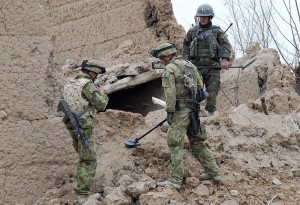TUESDAY, 8 NOVEMBER 2011
Radar works a bit like our eyes - just as we see via visible light from the Sun bouncing off objects into our retinas, so radar ‘sees’ by emitting radio waves, which bounce off a target and back into receivers.Seeing through walls, however, is more difficult. Just like visible light, very few radio waves can be transmitted and return through a solid object, so just as we can’t see through walls, radar can’t detect objects behind them. Usually more than 99% of radio waves fail to be transmitted through the wall in the first place. By the time the waves have bounced off their target and back through the wall to the receiver, only 0.0025% of the signal remains. Although radio waves with a longer wavelength are better as passing though walls than shorter ones, large apparatus is needed to detect them.
Now Gregory Chavat and colleagues at MIT have developed a new radar system, which uses very short but amplified radio waves (S-waves) to show objects on the opposite side of the wall as bright spots. Sophisticated software can then subtract each reflected image from the last to specifically detect moving targets in ‘real time’.
Although humans only show up as moving blobs at present, the use of small wavelengths means that the system is portable. With further refinement, the new radar system may potentially aid emergency response teams or those in high-risk combat situations.
Written by Joanna-Marie Howes
DOI: 10.1109/ARRAY.2010.5613314

